Abstract: Use less component count, money, and board space when designing Sallen-Key filters. Simplify band pass filters with fixed gain amplfiers.
Simple second-order filters meet many filtering requirements. A low-order low-pass filter, for example, is often adequate for antialiasing in ADC applications or for eliminating high-frequency noise in audio applications. Similarly, a low-order high-pass filter can easily remove power-supply noise. When you design such filters with built-in gain, fixed-gain op amps can save space, cost, and time. Figure 1 illustrates the use of fixed-gain op amps in building second-order low-pass and high-pass Sallen-Key filters. Filter "cookbooks" are useful in designing these filters, but the cookbook procedures usually break down for a given response, such as Butterworth, if the gain set by RF and RG is greater than unity. What's more, the cookbook component-value formulas can yield unrealistic values for the capacitors and the resistors.
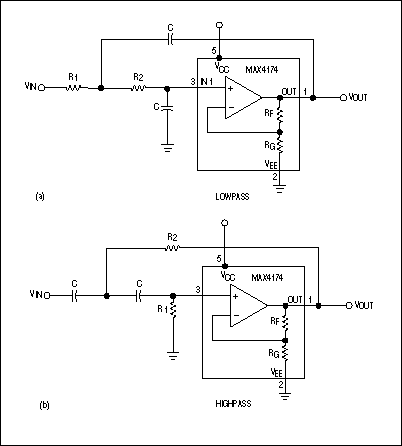
Figure 1. Sallen-Key filters use fixed-gain op amps to realize a second-order Butterworth response.
Butterworth filters, for example, offer the flattest passband. They also provide a fast initial falloff and reasonable overshoot. You can easily design such filters using the table below with the following equations: R2 = 1/(2πfC √) and R1 = XR2.
Butterworth-Filter-Design Criteria
*A gain of 1.25 is impossible to obtain with matched capacitors for the low-pass case.
For a gained filter response, the use of a fixed-gain op amp reduces cost and component count. It also decreases sensitivity, because the internal, factory-trimmed, precision gain-setting resistors provide 0.1% gain accuracy. To design a second-order Butterworth low-pass or high-pass filter using a fixed-gain op amp, follow these steps:
Figure 2. Using the circuit values in the text, a simulation of the circuit in Figure 1a produces this Butterworth response.
A similar version of this article appeared in the July 6, 2000 issue of EDN.
Simple second-order filters meet many filtering requirements. A low-order low-pass filter, for example, is often adequate for antialiasing in ADC applications or for eliminating high-frequency noise in audio applications. Similarly, a low-order high-pass filter can easily remove power-supply noise. When you design such filters with built-in gain, fixed-gain op amps can save space, cost, and time. Figure 1 illustrates the use of fixed-gain op amps in building second-order low-pass and high-pass Sallen-Key filters. Filter "cookbooks" are useful in designing these filters, but the cookbook procedures usually break down for a given response, such as Butterworth, if the gain set by RF and RG is greater than unity. What's more, the cookbook component-value formulas can yield unrealistic values for the capacitors and the resistors.

Figure 1. Sallen-Key filters use fixed-gain op amps to realize a second-order Butterworth response.
Butterworth filters, for example, offer the flattest passband. They also provide a fast initial falloff and reasonable overshoot. You can easily design such filters using the table below with the following equations: R2 = 1/(2πfC √) and R1 = XR2.
Butterworth-Filter-Design Criteria
|
|
|
|
|
|
|
|
|
|
|
|
|
|
|
|
|
|
|
|
|
|
|
|
|
|
|
|
|
|
|
|
|
|
|
|
|
|
|
|
|
|
|
|
|
|
|
|
|
|
|
|
|
|
|
|
|
|
|
|
|
|
|
|
|
|
|
|
|
|
|
|
|
|
|
|
|
|
|
|
|
|
|
|
|
|
|
|
|
|
|
|
|
|
|
|
|
|
|
|
|
|
|
|
|
|
|
|
|
|
|
|
For a gained filter response, the use of a fixed-gain op amp reduces cost and component count. It also decreases sensitivity, because the internal, factory-trimmed, precision gain-setting resistors provide 0.1% gain accuracy. To design a second-order Butterworth low-pass or high-pass filter using a fixed-gain op amp, follow these steps:
- Determine the corner frequency fC.
- Select a value for C.
- For the desired gain value, locate X under the proper column heading in the table.
- Calculate R1 and R2 using the equations.
R2 = 1/(2π fC √) = 1/(2π × 24kHz × 470pF × √ ) = 51kΩ, and R1 = XR2 = 0.076 × 51kΩ = 3.9kΩ.
Figure 2. Using the circuit values in the text, a simulation of the circuit in Figure 1a produces this Butterworth response.
A similar version of this article appeared in the July 6, 2000 issue of EDN.
 電子發燒友App
電子發燒友App











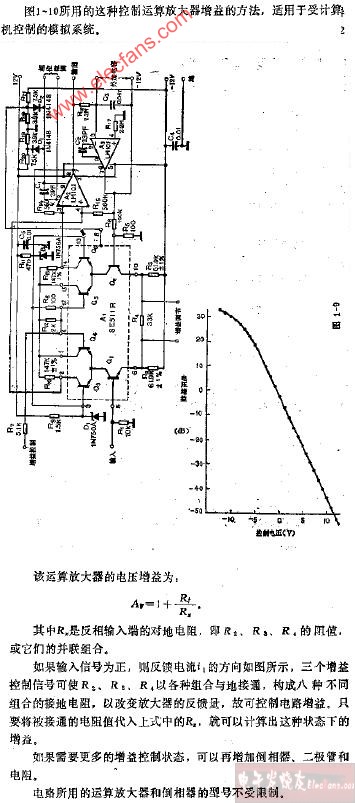
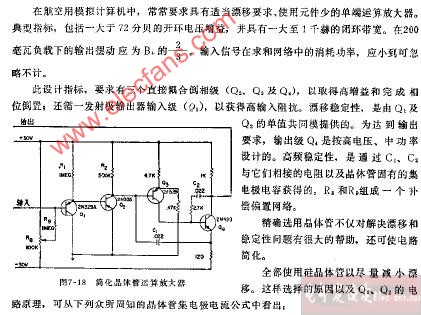
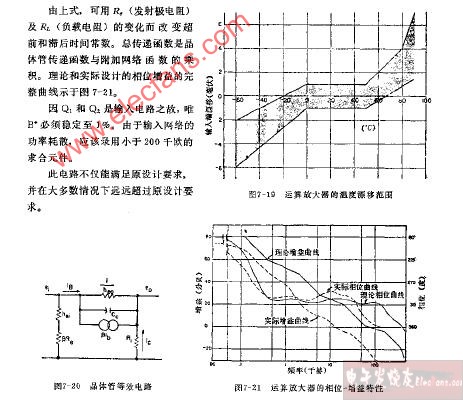


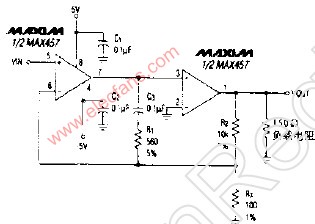

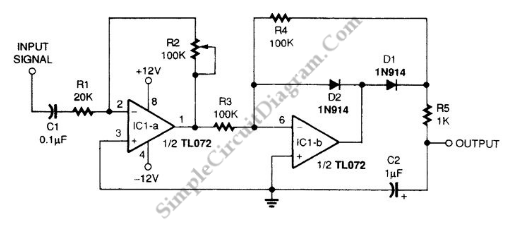










評論